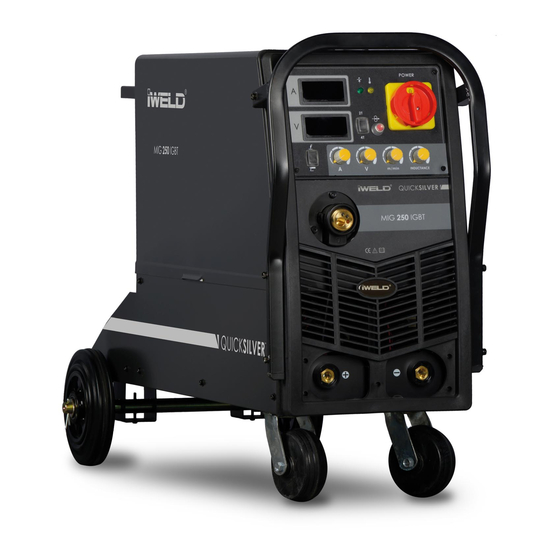Summarization of Contents
Safety Precautions
Electric Shock Warning
Potential fatal risks from electric shock during operation.
Respiratory Health
Dangers of welding smoke and gas to health.
Eye and Skin Protection
Hazards from arc light emission to eyes and skin.
Fire Prevention
Managing fire risks from welding sparks.
Hearing Protection
Risks of hearing damage from welding noise.
Machine Fault Guidance
Advice for dealing with machine malfunctions.
Installation
Connecting Power Wires
Instructions for connecting primary power wires to the correct voltage class.
Connecting Output Wires
Procedures for connecting electrode holder, work piece, and earth clamp.
Operation Instructions
Basic Operation Steps
Step-by-step guide to starting and performing welding.
Welding Current Adjustment
How to adjust welding current and voltage for optimal results.
Welding Speed and Wire Feed
Welding Speed Selection
Factors affecting welding speed and optimal limits.
Wire Overhang Adjustment
Importance of setting the correct wire overhang for welding.
Workspace Precautions
Workspace Requirements
Conditions for dust, gas, materials, temperature, and ventilation.
Safety Requirements
Ventilation and Cooling
Ensuring adequate ventilation and cooling for machine longevity.
Current Overload Protection
Avoiding exceeding maximum welding current to prevent damage.
Voltage Surge Protection
Adhering to voltage limits to prevent damage from surges.
Grounding Requirements
Importance of proper grounding for electric shock prevention.
Overheating and Restart
Procedure for handling machine overheating or overload.
Maintenance
Pre-Maintenance Safety
Steps to take before performing maintenance or repair.
Connection Checks
Ensuring internal gas and electricity connections are secure.
Clothing and Personal Safety
Keeping away loose clothing and hair from electric parts.
Cleaning and Dust Removal
Regular cleaning of the machine with compressed air.
Gas Pressure Check
Verifying correct gas pressure to prevent component damage.
Water Damage Handling
Procedure for drying and checking insulation after water exposure.
Storage Recommendations
Storing the machine in a dry place when not in use.


















Need help?
Do you have a question about the MIG 250 IGBT and is the answer not in the manual?
Questions and answers